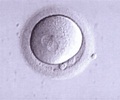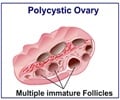NEW YORK (June 5, 2009) -- In recent decades, there have been periodic reports of a worldwide decline in sperm count and quality.
It has been observed that in the previous decades, male infertility has ostensibly been on the rise, accompanied by increases in testicular cancer and hypospadias - a congenital defect in which the opening of the urethra is on the underside, rather than at the end, of the penis. Taken together, these three conditions have been termed testicular dysgenesis syndrome. This may explain periodic reports of a worldwide decline in sperm count and quality.
Environmental chemicals known as phthalates, some researchers say, may be the cause of the problem. Used in the manufacture of plastics, phthalates at sufficiently high levels have been seen to interfere with male fetal development. Some studies have found that hypospadias are more prevalent among male infants today than they were 30 years ago.Now, a team of researchers based at NewYork-Presbyterian Hospital/Columbia University Medical Center and Children's Hospital of Philadelphia have taken a fresh look at the data and have found no rise in rates of hypospadias in New York State from 1992 to 2005. Similar findings have been reported by researchers looking at state-level data in Washington and California.
These studies break the link between the purported cause -- phthalates -- and their presumed effect -- impaired male reproductive health, says Dr. Harry Fisch, director of the Male Reproductive Center at NewYork-Presbyterian Hospital/Columbia University Medical Center and professor of clinical urology at Columbia University College of Physicians and Surgeons.
"It's all in the data," says Dr. Fisch. "For one, the entire method of collecting data on birth defects has changed. Statewide surveillance of birth defects has become the norm. This calls into question the value of the older data.
"Second," he adds, "we can't assume that these chemicals are harmful at low, environmentally allowable levels just because we've seen high rates of exposure to phthalates in utero have been linked to hypospadias in animal studies."
In the study, Dr. Fisch and and his colleagues reviewed the total number of cases of hypospadias in New York State from 1992 to 2005 and found no statistically significant increase during that interval. These findings have just been published in the May 2009 issue of the Journal of Urology. Co-authors included Drs. Terry W. Hensle and Grace Hyun of NewYork-Presbyterian Hospital/Columbia University Medical Center, and Dr. Sarah M. Lambert of Children's Hospital of Philadelphia.
When combined with recent research showing that sperm counts are not declining, the current study suggests that testicular dysgenesis syndrome may not be a problem in humans, contrary to earlier concerns.
The only significant risk factor for hypospadias that emerged from Dr. Fisch's research is maternal age. Children of mothers aged 35 years and older show higher rates of the birth defect -- a finding that is consistent with other recent epidemiological studies.
Most hypospadias can be surgically repaired in the first year of life by a pediatric urologist.
More on Phthalates
In July 2008, Congress approved a ban on the use of phthalates in children's products, such as teething rings, rubber ducks, and soft toys. However, these chemicals are ubiquitous in today's environment. Also known as plasticizers, they are found in shampoo, pharmaceuticals, medical supplies, pesticides, plastic wrap, garden hoses, and plastic clothing, among other common products.
Given their suspected detrimental effects at high levels of concentration, questions arise around how to regulate phthalates and other human-made environmental chemicals.
"Environmental chemicals need to be regulated," says Dr. Fisch, "but policies should be based on science, not fear."
Source-Eurekalert
TAN















